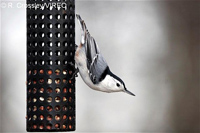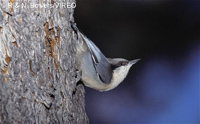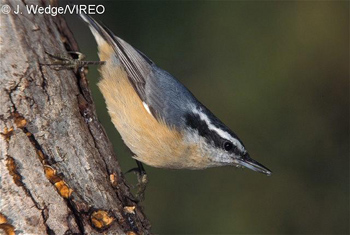Loading ...
Red-breasted Nuthatch
The Red-breasted Nuthatch (Sitta canadensis) inhabit boreal forests and mountain coniferous forests across the continent. In years of low seed production irruptions may take place and Red-breasted Nuthatches will winter far south of their usual haunts. This handsome little bird with black-and-white striped head and rufous breast forages upside down along tree trunks from top to bottom. The Red-breasted Nuthatch's call is a more nasal and diminutive version of the White-breasted's "yank-yank-yank", well described as the tooting of a little toy horn. The nuthatch was named for its ability to wedge seeds in tree crevices and hack ("hatch") into the seeds with its bill
See all Red-breasted Nuthatch photosField Marks:
The Red-breasted Nuthatch has a black crown, white stripe over the eye, broad black eye-line, blue-gray back and rufous breast (paler in the female). (L. 4.5 in.)
Distribution:
The Red-breasted is a year-round resident in Canada, the eastern U.S. from Pennsylvania north through New England, the Appalachians, the Great Lakes Region, and western states from Colorado to California. The bird's winter irruptions extend to Mexico.
Similar Species:
 |
White-breasted Nuthatch (species account) (all photos) The White-breasted Nuthatch lacks the black and white striping on the head and the rufous breast. |
 |
Pygmy Nuthatch (all photos) The Pygmy Nuthatch in the western U.S. has a brownish head with no striping. |
Habitat & Nesting:
The Red-breasted Nuthatch excavates its own nest cavity in aspens and conifers; it prefers spruce and fir trees to pines.
More Information:
The Red-breasted Nuthatch has a unique habit of collecting gobs of sticky pitch from conifers and smearing it on the entrance to its nest hole, apparently to deter predators. The technique has been shown to be more effective with House Wrens than red squirrels.

